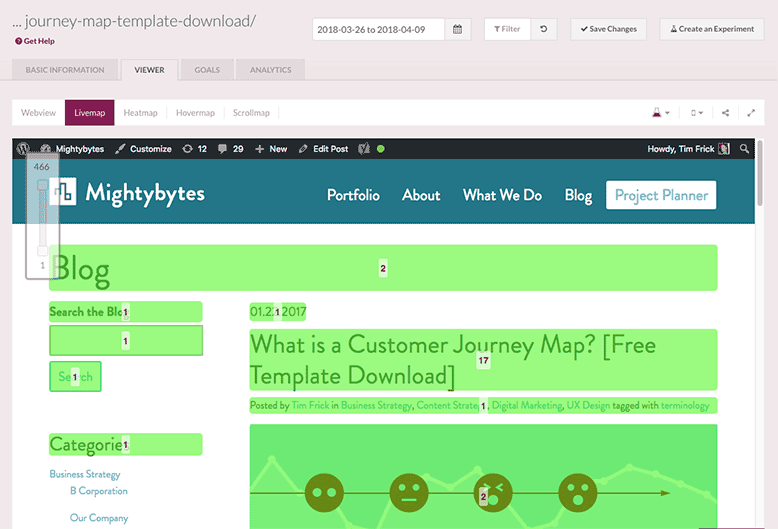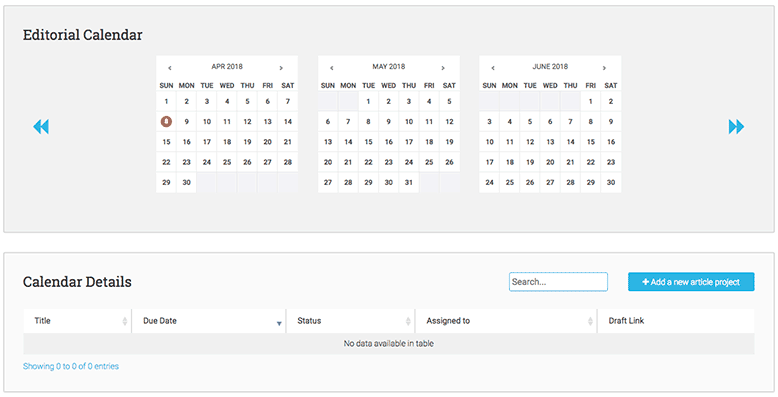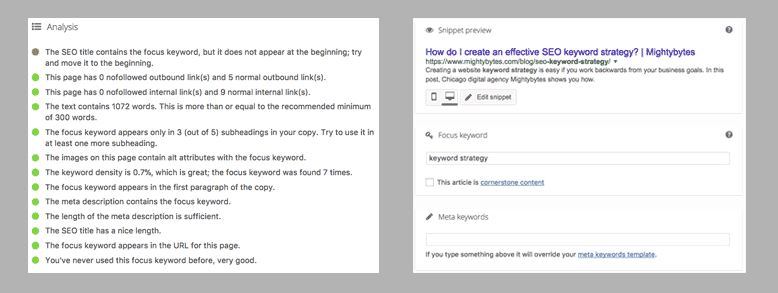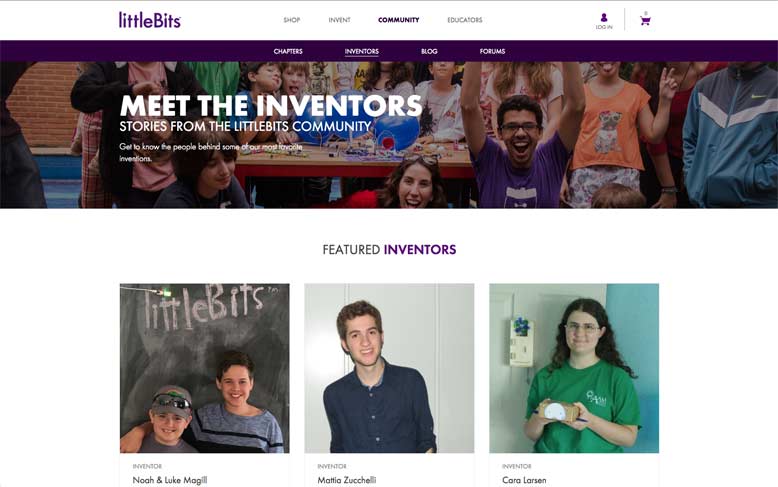12 Website Governance Tips for Better Content Marketing

In this post, we cover 12 tips for planning and executing a good website governance strategy that helps you consistently meet business and marketing goals over time and across teams.
Good content can be an organization’s most important business asset, so it stands to reason that your best marketing efforts would go into creating and managing targeted content for the company website. Adhering to some simple governance guidelines can make the difference between a website that meets business and marketing goals and one that falls short. Unfortunately, in our experience, the latter is an all too common scenario. Good content governance practices are part of a successful overall digital strategy as well.
Broken into two categories—content planning and content production—here are 12 website governance practices that will help you better ensure your organization’s website becomes a critical marketing tool for business success.
Website Governance in Content Planning
1. Embrace Your Capacity
Successful content marketing requires good planning, and that starts with capacity. If you don’t have the team or budget to produce targeted, well-researched content each week, plan for what you can produce, then scale up as resources allow. Have detailed conversations with your team about time and availability to create new content. If you’re a content marketing team of one, make sure to plan your own schedule accordingly.
That said, overplanning can be worse than no planning at all. Stay flexible enough to easily accommodate last minute requests or unforeseen hiccups. Because there will always be unforeseen hiccups.
2. Measure Success Metrics
A good governance strategy and a successful measurement strategy go hand-in-hand. Know up front what metrics are important for organizational success. Be ruthless. In a world where you can measure everything, stay focused on metrics that move your business goals forward, then measure those at a frequency that corresponds to your capacity.

Google Analytics offers powerful website data tools and is arguably the most popular platform for measuring content marketing success, but there are others as well. Depending on the metrics you’re looking for, Crazy Egg, Hotjar, Concurra, SiteImprove, or a variety of other analytics tools might better suit your needs.
3. Create Editorial Guidelines
What topics will you cover? What is the voice and tone of your content? Is it casual? Academic? What is grammatically appropriate (or inappropriate) for your audience? How long should your posts be? Create a set of helpful editorial guidelines that will enable your content marketing efforts to scale elegantly and consistently, then be sure to workshop those guidelines with your team so everyone clearly understands them.
4. Create—and Use!—a Content Calendar
Look at the year ahead and add upcoming topic ideas to a calendar. This doesn’t need to be planned down to the day, but a content calendar can be helpful for idea generation, team and expectation management, and capacity planning. In this calendar, define:
- Channels: Where will you publish content? On the blog? In landing pages? Via social media?
- Velocity: How frequently will you publish content to the above channels?
- Topics: What date-specific categories will you cover during certain times of the year? Will you have a repository of ‘on deck’ ideas?
Don’t forget to include a healthy dose of evergreen content—posts with a long shelf life that aren’t time-sensitive—in your calendar. These posts can be re-shared often and can help fill in capacity gaps when something comes up.

There are dozens of content calendar services available online. If resources are an issue, a spreadsheet coupled with a standard calendar tool for scheduling will work just fine. For more information, read our post, How to Create A Content Calendar You’ll Actually Use. Remember to stay flexible. Things happen. Priorities shift. You should be able to shift with them.
5. Define the Role SEO Plays in Your Content Marketing
We happen to think that good SEO is critical to any website’s success, but it’s not a priority for everyone. Make sure you define how important search traffic is to your website’s overall success. Then make sure content contributors are well-versed on how to define and use keywords, build links, and tell good stories that resonate with your readers. Also, take into consideration how this extra effort and additional skill set may impact capacity planning and your content workflow.

6. Keep Tabs on Your Taxonomy
While this post assumes you’re already using a website with intuitive navigation and clear content structure, it is worth mentioning that a website’s taxonomy—the categories and tags you use to organize content—can easily get out of hand over time. Content management systems like WordPress or Drupal make adding new tags and categories as easy as filling in a field and hitting return. Problem is, with multiple contributors you run the risk of taxonomy sprawl. Misspelled tags, varying use of hyphens or capitalization, and other inconsistencies can frustrate users and make content more difficult to find. These issues can also undermine your website’s performance in search engines. This is especially challenging with user-generated content (see below).
7. Align Teams and Channels
If you’re in a larger organization, website governance becomes exponentially more challenging. Large universities or companies with multiple business units, for example, can have dozens, or even hundreds of departments contributing to a variety of websites all under the same domain. In these organizations, it’s important for teams to make sure everyone is aligned on business and marketing goals, who your target users are, what success looks like, consistency of voice, tone, grammar, topics, and so on. We facilitate discovery workshops to help our clients figure these things out.
Website Governance in Content Production
8. Create a Clear Content Workflow
Depending on the size of your team or type of content you create, what seems like a deceptively simple process of writing and publishing blog posts can actually take a lot more steps than most people think. By the time edits, revisions, and approvals are made, a single blog post can take ten or more steps to publish. And then you have to promote it!

Create a content workflow with very clear steps, then run a content production workshop with your entire team to make sure everyone understands and can replicate the process. Be sure that the right person from your team owns each step in the process. That is critical. If one person is responsible for image creation and another for editorial, they each should know what is coming down the pipeline and when they will be needed. We ran a workshop covering this in our work with Alliance for the Great Lakes to great results.
9. Keep Tighter Reins on User-Generated Content
User-generated content can be a great way to cultivate a thriving online customer community. If you don’t have clear guidelines and a dedicated community manager, however, it can also put your website on the fast track to disaster. Consider these things:
- Publish community guidelines that clearly describe how users should create and submit content.
- Create an internal moderation policy that a community manager can use to support customers and contributors.
- Put a dedicated resource on maintaining quality and managing taxonomy, comments, submissions, etc. every day. This stuff can get out of hand quickly.
For more information about governance issues that arise with community-driven websites, check out our post Questions to Ask Before Launching a User Forum or Community Site.

10. Run Routine Content Audits
Content audits help website owners stay focused on meeting goals and maintaining website content quality over time. By auditing how your content performs against key metrics, you can make important governance decisions about what to keep, what to throw away, and what to improve. This can also be helpful when done in tandem with a customer journey mapping workshop or a content mapping exercise.
There are no hard and fast rules about how often to perform a content audit, but since they’re such helpful governance tools, we suggest auditing your content at least once per year. For more information on this topic, check out our post, Why You Need a Content Audit (And How to Run One).
11. Make Sure Contributors Know How to Optimize Content
Taxonomy isn’t the only thing that can get out of hand on a growing website. Here are just a few other important things to consider:
- Image size: Bloated images can slow down page load, which can cause page abandonment and waste energy. In a best case scenario, your site pages should load instantaneously, but should never take longer than two seconds. Compress images using a tool like SmushIt or Kraken.io to reduce image file size.
- Embedded videos: Don’t host video on your own server, use a service like YouTube, which is powered by renewable energy. Make sure the embed codes you use offer an optimal experience across devices and platforms.
- Don’t forget accessibility: Up to a billion people in the world have some sort of disability. Simple tasks like adding alt tags to photos can make a big difference in providing them a better experience, yet these accessibility practices are often forgotten in content production workflows.
12. Dovetail Content Marketing with User Experience Design
Finally, once you publish a piece of content, you can track how users interact with it. This offers a great opportunity to improve that content over time and increase conversions. Optimizing old blog posts or landing pages to better suit user needs can be a great search engine optimization tactic as well. Check in regularly on the success metrics you defined above to drive these efforts. Better yet, run some user tests to see what really resonates with your target audience and update your pages accordingly.
Final Thoughts: Change Management and Website Governance
Good website governance often requires organizational change, especially as your content marketing efforts grow. The more stakeholders you involve and the more you rely on the company website for different business and marketing needs, the harder it becomes to maintain quality and consistency. To plan for growth, a certain level of change management will likely need to happen within your organization. That’s a great sign. And a good start.
Want to learn more about good website governance practices? Check out our other governance posts or get in touch. We love helping people improve their digital marketing.



